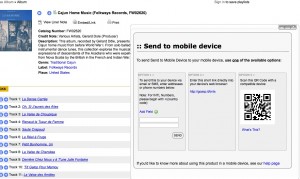
Yes, I’m reading it. I recently checked
Moby-Dick out from
Snell and am now returning it. Do those two sentences sound like they contradict each other? They don’t; I only returned the book because I decided I needed to own a copy if I was going to read it. There is no way I would get through this massive, intensely detailed novel in the time before I needed to return it.
I suppose I don’t need to go in to the story. We all know about Captain
Ahab and his obsession with the white whale known as Moby Dick. We all know that the book begins with the unforgettable sentence; “Call me
Ishmael.” In fact, the book is narrated by Ishmael entirely and he does not even get on the boat–the
Pequod–until some 115 pages in. Before that time comes some of the plot that you might not know about, or have forgotten.
He spends his time for the first fifth of the book wandering around New Bedford, then Nantucket, admitting that he is feeling restless and depressed and will stop at nothing to get on a whaling boat. He encounters a cannibal named Queequeg along the way and they become unlikely friends and bedmates (yes, it was perfectly okay for two men to share a bed back then). He and Queequeg arrive in Nantucket and find their way on the
Pequod, where they convince the best mate, Bildad, to accept them as part of the crew. But they do not meet Ahab. He is a reclusive captain, said to only have one leg after a whale bit the other one off. So he walks on a wooden leg and broods in his cabin. Ahab himself will not appear until close to page 150.
In short, there is much more to
Moby-Dick than simply a whale.
The book was not popular when it was first received in 1851.
Herman Melville had been writing popular novels for a few years prior to its publication, but
Moby-Dick was not a fast paced high-seas adventure. Even then, audiences found it to be a slow paced high-seas adventure. Many chapters are prolonged lush descriptions of Nantucket and elegant fact sheets about whaling. Some chapters are a mere two pages long; others are closer to twenty. This deliberately rumbling, halting advancement of action would probably be renounced by creative writing teachers even today–except it isn’t, because the book we happen to be talking about is
Moby-Dick. That the book incorporates every form of writing within–fiction, memoir, poem, song, theater, do-it-yourself manual, travelogue–helps that pervading style. This book is simply a literary tour-de-force.
My reading of the book takes a similar rhythm, except more halting; I actually first picked up this book in January of last year. Faced with school, stress, and the prospect of reading a 600-page book, I set it aside, vowing to return. Now I have returned, but I’m taking it step by step. Some days I only read one four page chapter, others I’ll read a longer chapter, plus five more pages. I am soaking it up, to use one final cliche. This time I will succeed at finishing this book. I’ll chase it to the ends of the earth if I have to.
Note: Read the links attached to the names carefully. They help explain the biblical allusions in the novel.
 If you have any questions, feel free to contact me at d.mandel@neu.edu.
Debra Mandel
If you have any questions, feel free to contact me at d.mandel@neu.edu.
Debra Mandel If you have any questions, feel free to contact me at d.mandel@neu.edu.
Debra Mandel
If you have any questions, feel free to contact me at d.mandel@neu.edu.
Debra Mandel Yes, I’m reading it. I recently checked
Yes, I’m reading it. I recently checked  So I am almost done reading
So I am almost done reading  Being a film fanatic, I want to express my appreciation of The Hub’s numerous books on cinema. Each time I wander back there, I see a new book on film. A few weeks ago I sat down and read
Being a film fanatic, I want to express my appreciation of The Hub’s numerous books on cinema. Each time I wander back there, I see a new book on film. A few weeks ago I sat down and read